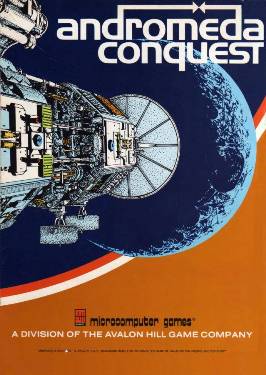
Lieutenant Narwhal – I heard you have experience in space strategy. I need your help in building my galactic empire !
Sure, my Ant Queen ! What sort of opposition can I expect ?
None ! We are going to conquer the galaxy in Solitaire.
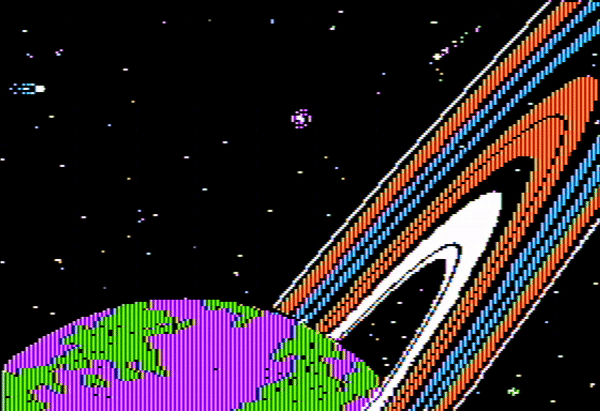
Avalon Hill, the historical leader of tabletop wargames, had failed to position itself as a leader of computer wargames in 1980, and failed to make the difference in 1981 as well. But Avalon Hill did not despair : it just had to try harder. It had missed the Role Playing Games revolution when it turned down Gary Gygax in 1974, it would not miss the video game revolution. Throwing spaghetti at the proverbial wall until something sticks, 1982 would be the most prolific year of Avalon Hill, with around 20 computer games released in all possible genres, among which 7 wargames. Full disclosure : a few of those games are hard to position between 1982 and 1983, being announced as new releases in January 1983 but having a 1982 copyright.
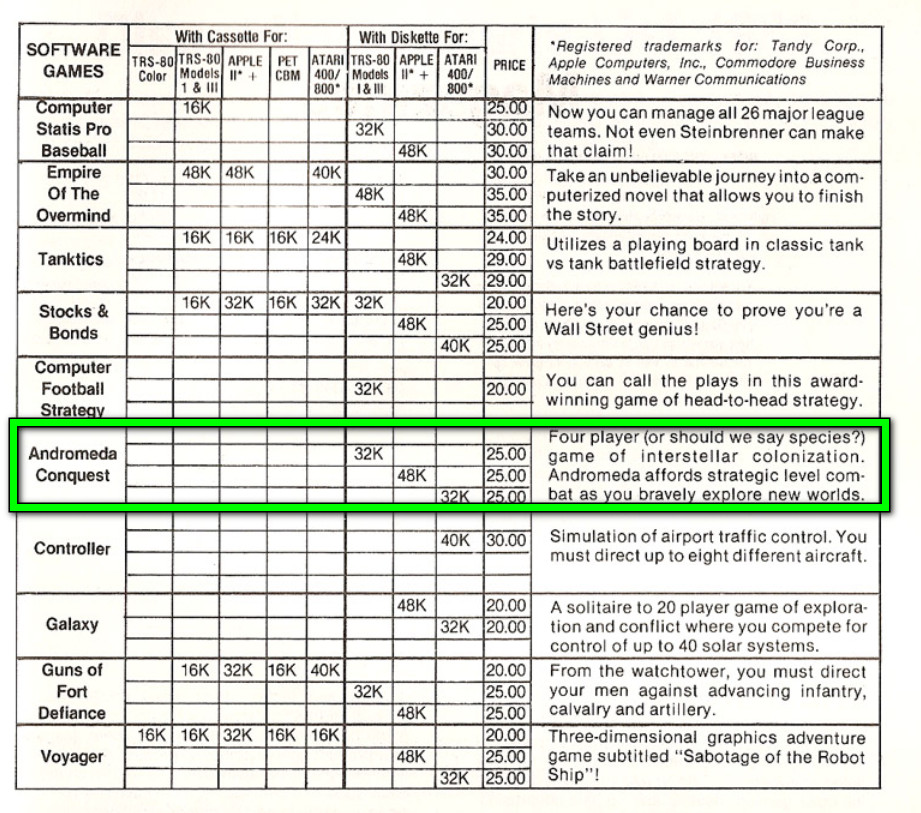
I picked David Peterson’s Andromeda Conquest as the earliest of the lot, as it appeared in the November 1981 catalogue, but investigating further for this article I found out that it was only released in Fall 1982, as part of a batch that also included V.C., Legionnaire, and three other non-wargames. There is no clear reference for the game (possibly the board game Stellar Conquest was a very loose reference) and I have no information on David Peterson ; the game itself feels like a more complex iteration of Galactic Empires/Galaxy.
Just like Galaxy, Andromeda Conquest is a multiplayer game first and foremost, with an option to play “against the clock” as a single player. Unlike Galaxy, the manual does not give you any target to benchmark your performance.
After choosing the number of player(s), the game asks you to choose your race :
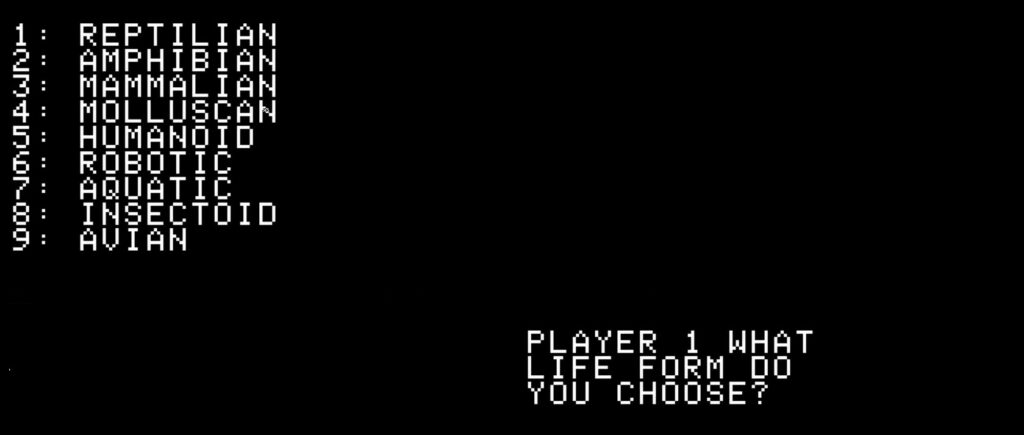
I have been doing pretty well as an ant – better than as a human – so I am going for insectoid. The choice is purely cosmetic anyway.
And from there, I start my Empire.
I start on my beautiful homeworld, system#5. Ah, I wish I could describe to you the beauty, the homeliness of system #5. But you are not an ant, you would not understand, so let’s go back to the game.
My homeworld (like all homeworlds) produces 10 resources. By coincidence, a colony ship [“Echo”] costs 10 so I build one immediately.
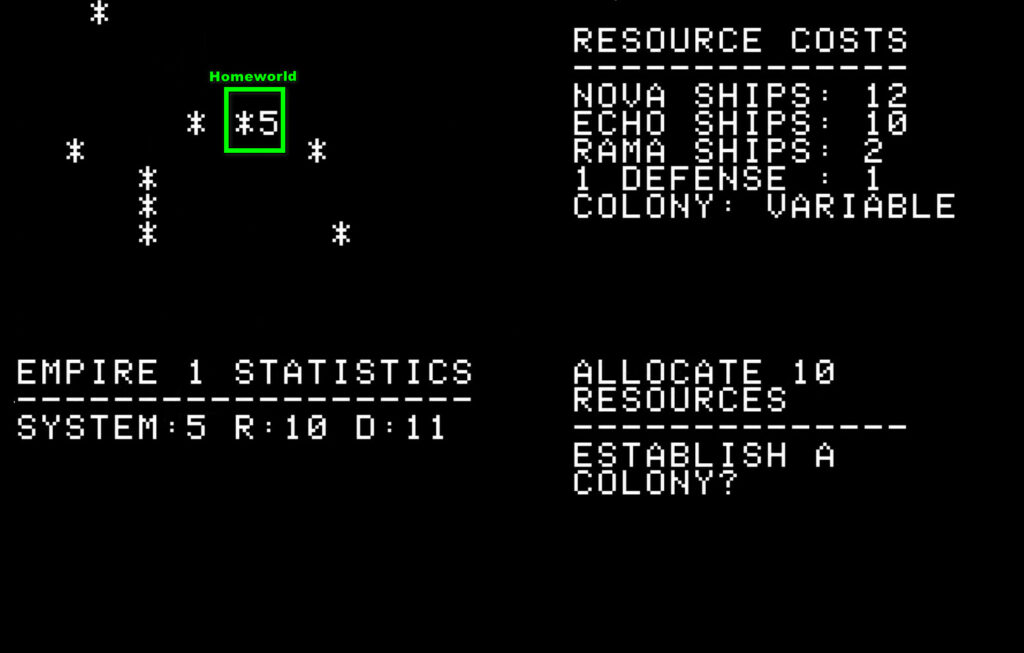
Echo ships move by 2 tiles a day, so I can immediately visit the system located left of my planet :
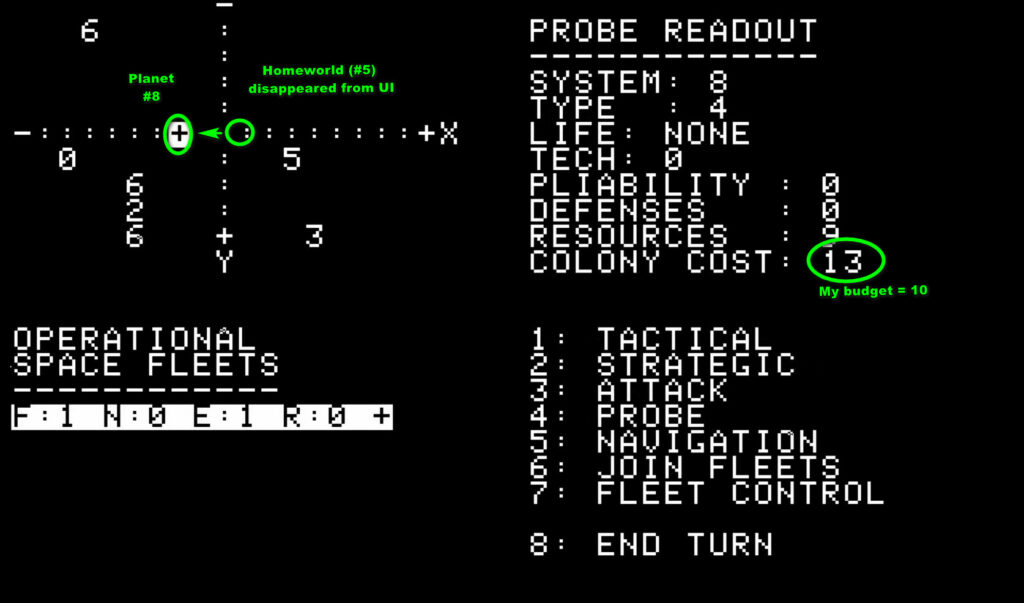
I am unlucky. While this new world is both rich [9 in production] and devoid of life, its “type” is very different from the one my race is used to, so it costs 13 to colonize. I produce only 10 by turn and whatever I don’t use in a turn is lost, so I cannot colonize this world for now. I cannot improve my planets in Andromeda Conquest either (except in defence) so I need to colonize some other worlds first.
I build another colony ship the following turn (to explore the systems below and right of my homeworld), and I jump to another nearby system with my first Echo colony ship.
I find a surprise on that second planet : it is not empty, but full of reptilians. They have some defences and are too expensive to colonize anyway, so system #7 won’t be added to my Empire right now either.
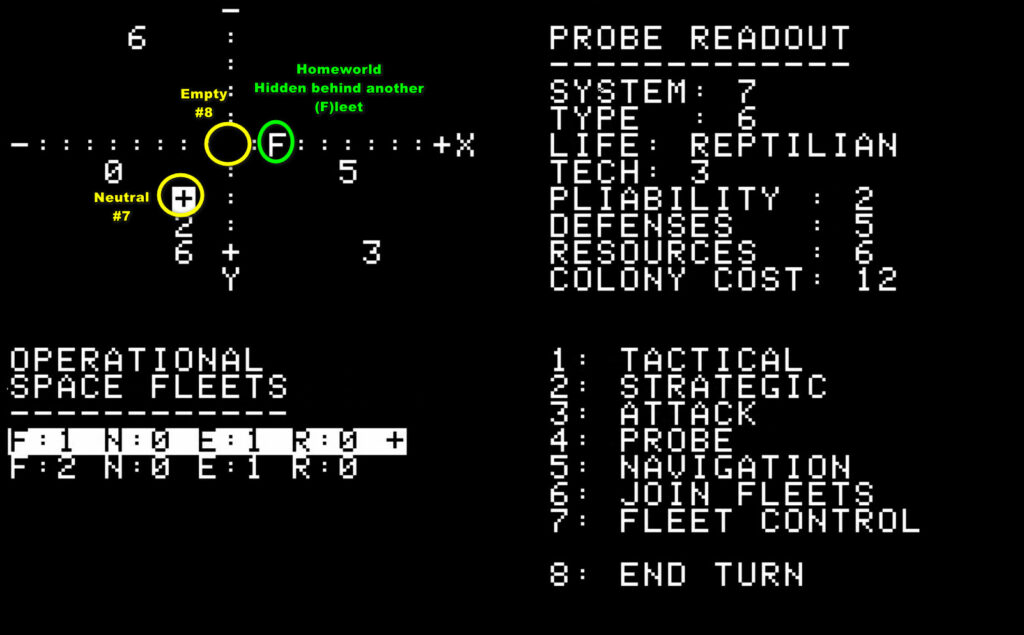
Well, I guess I can build a third Echo ship.
Checking the world just below the reptilian system #7 I find …
… robots.
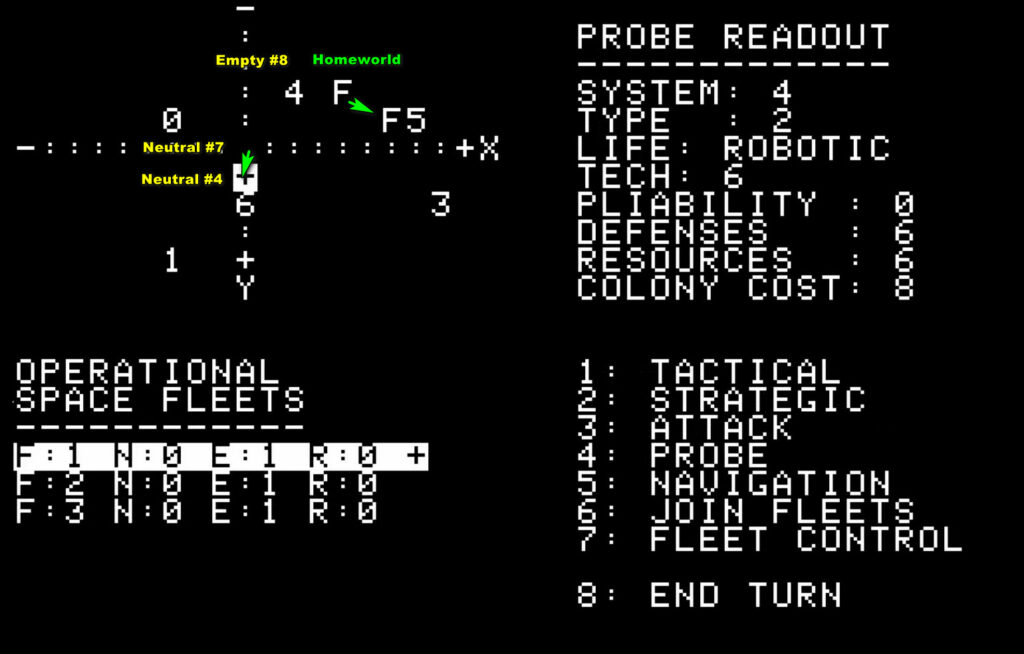
As an ant, I prefer them over reptilians, as robots at least won’t eat me, but I can’t colonize here either.
On the other hand, my second colony ship reaches world #6, which is empty and ripe for colonization.
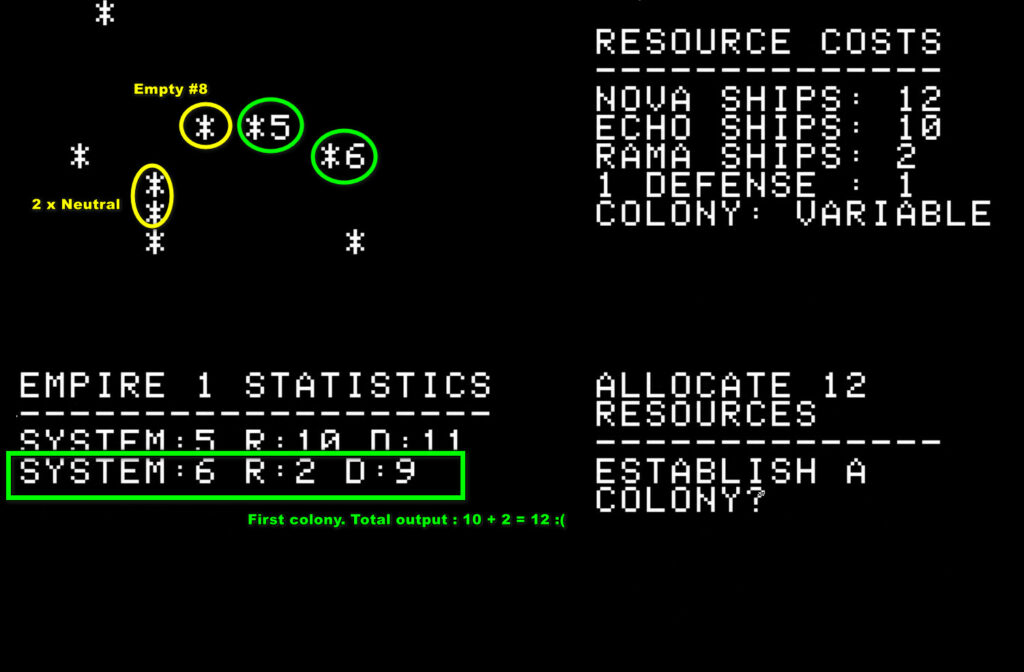
This pushes my production to 12. This is not enough to colonize world #8, but at this point my empire can start to snowball. I conquer system #10 just below the one with robots, and thanks to it, I can finally take system #8.
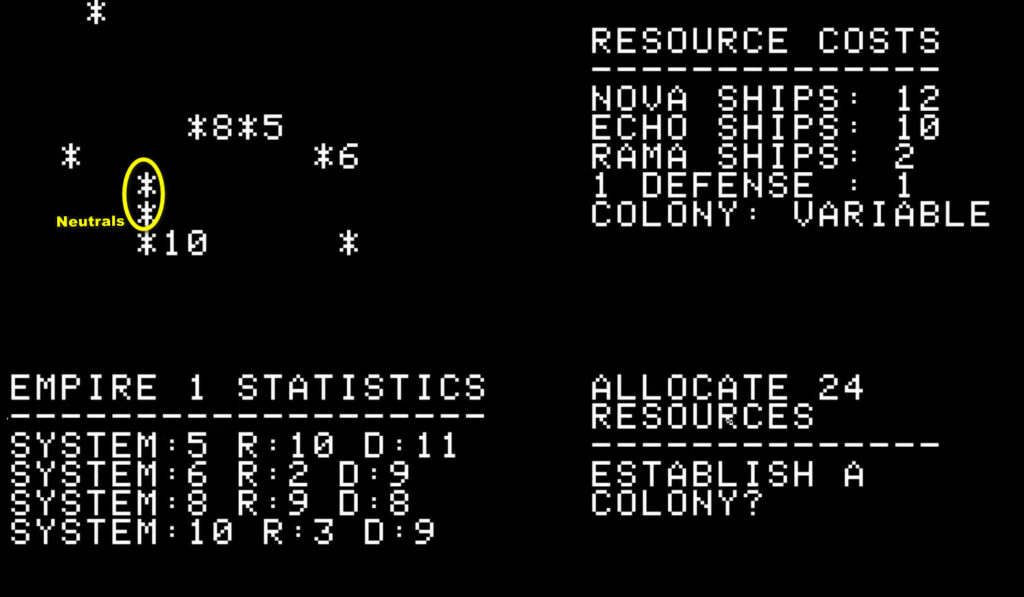
From there, I expand…
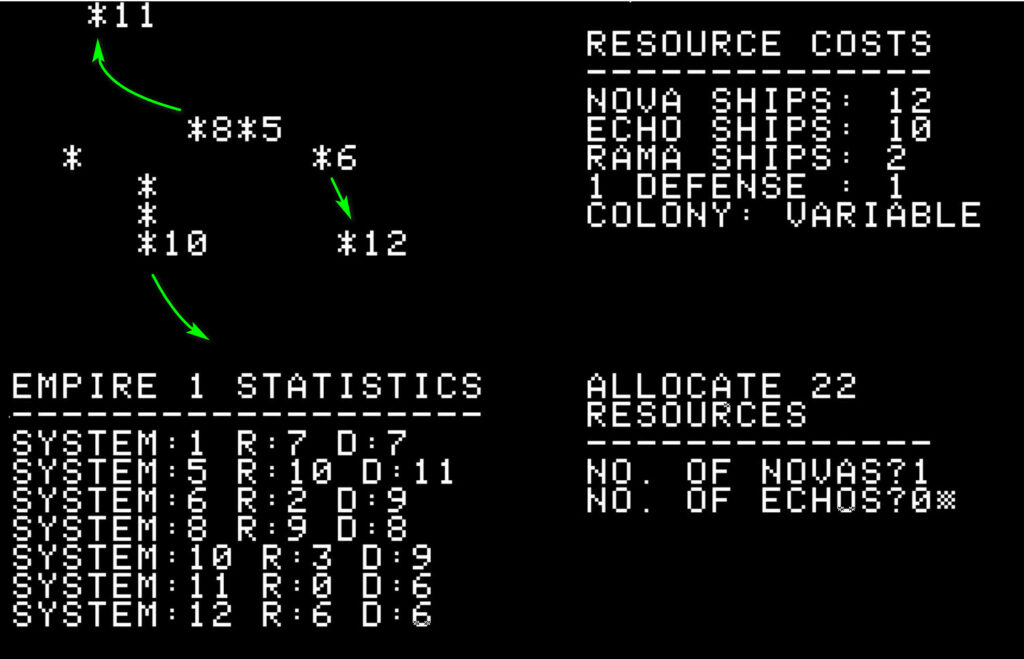
… and I expand more. Now it is time to visit my neighbours again.
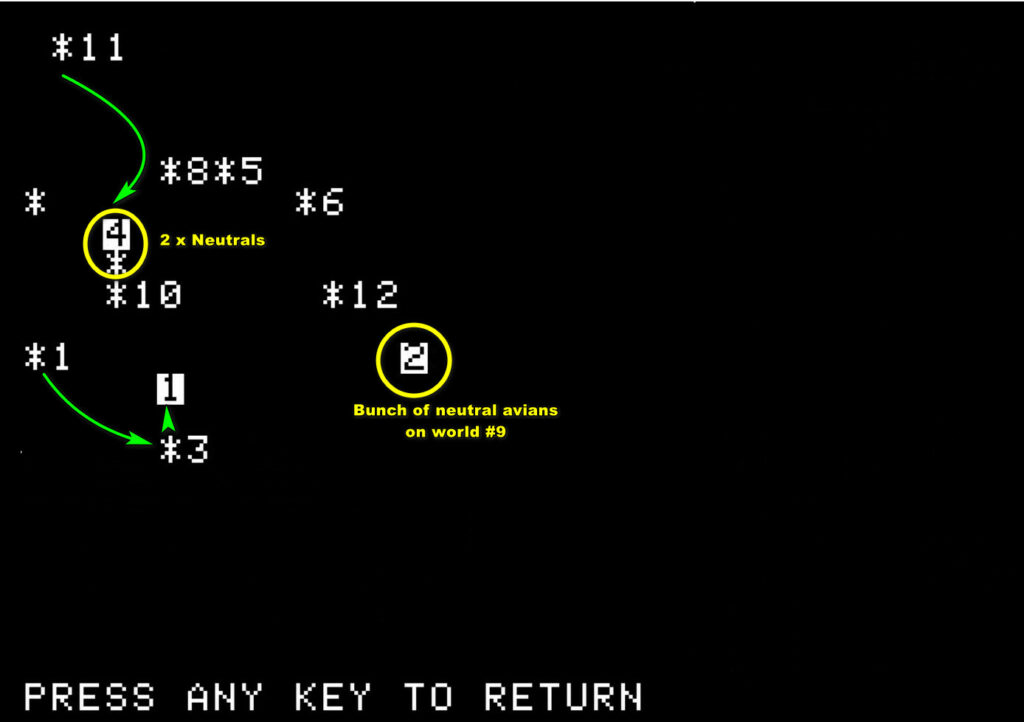
I used my cash-flow to produce warships, and I use them in support of my colonization ships. The first victims are the newly discovered avians from system #9.
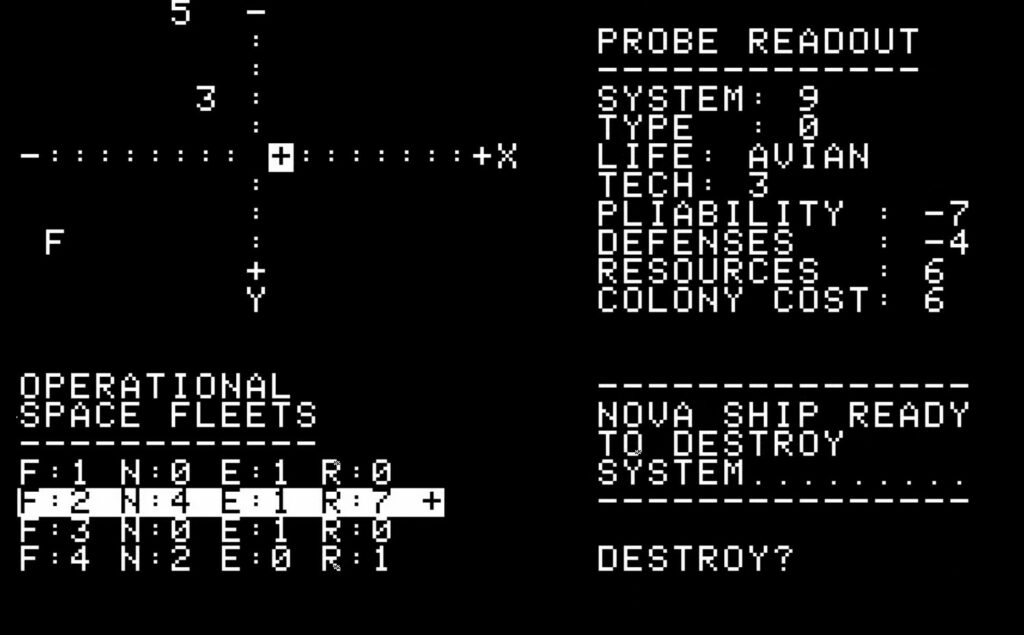
To seize an occupied world, I need to bring its defences to 0 or less, but I must do this without bringing their pliability to -9. Pliability decreases by a lump sum at each attack, and at -9 the defenders are so hard-core that I cannot reduce their defence further ; I tried in another game with 50+ ships, without effect. The trick, of course, is to crush them in one massive strike rather than trying several small ones. With 4 Nova ships, one attack is enough, and the Avians are conquered.
The Reptilians go down in the same turn. I can only colonize one system per turn, and well, I started with the avians, so I decide to destroy the system instead because my alignment is Chaotic Insectoid and also because I like to test new things.
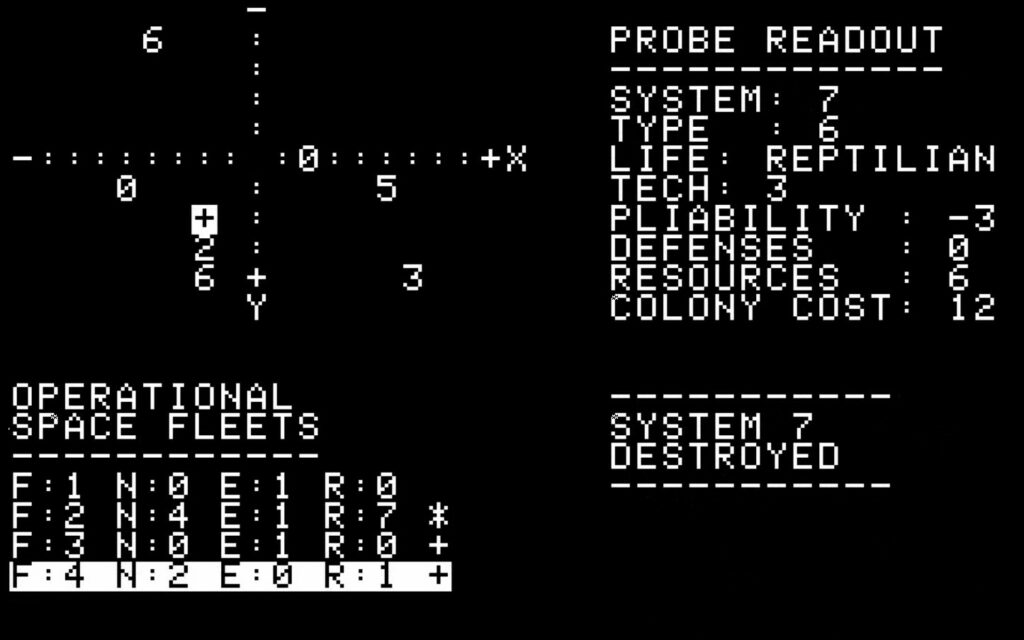
The robots are defeated the following turn, bringing my Empire to 10 systems, the end game condition :
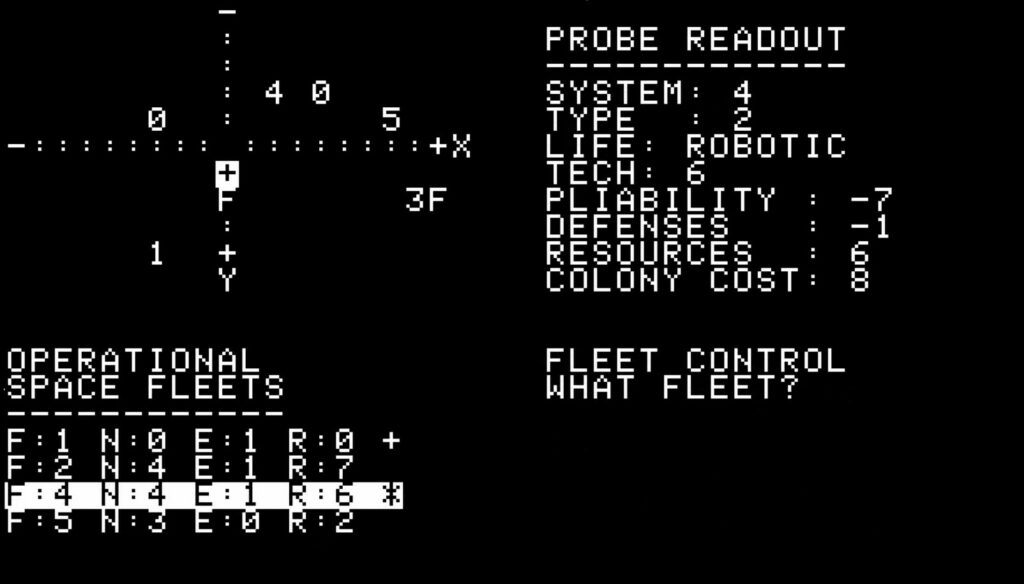
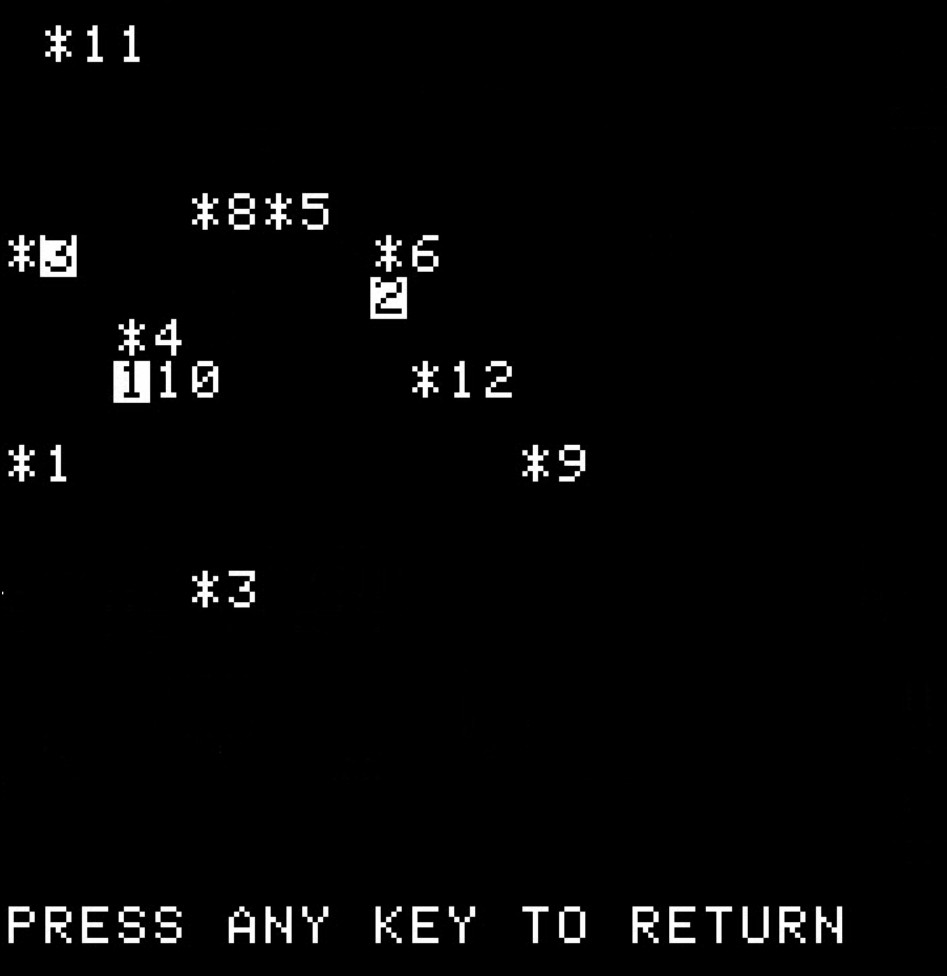
And for that glorious victory, I have this beautiful end screen :

Another victory for my ants !
Review
Andromeda Conquest by David Peterson, published by Avalon Hill
First release : 1982 on Apple II, Atari, TRS-80
Tested on : Atari, Apple II
Total Hours Tested : 1 hour
Average duration of a battle : 15 minutes in solo
Complexity : Trivial (1/5)
Would recommend to a modern player : No
Would recommend to a designer : No
Final Rating: Not rated, not designed for single player
Just like with Galaxy, I will review Andromeda Conquest for its single-player experience, but as the game was fully designed for multiplayer, with “single-player” added because it was absolutely free in development time, I will not rate it.
A. Immersion
The game leaves a lot to the imagination.
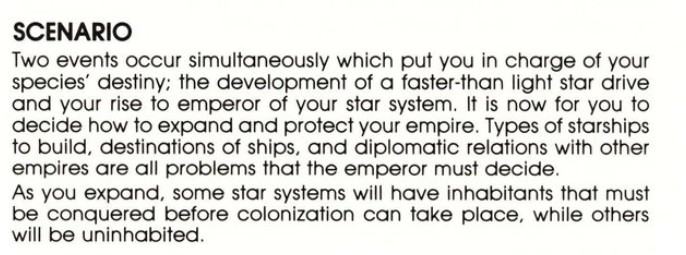
For the record, there is no mention of Andromeda anywhere, except in the title.
B. UI , Clarity of rules and outcomes
The game is sadly a mess. The manual does not explain much (impact of pliability, of tech level, …), and the UI is poor: the game erases from the display whatever location your fleet goes through, you have no way to check the map when the game asks you where you want to build your fleet, … You can easily merge fleets, but woe on you if you try to split one – you cannot.
It is unwieldy with 12 planets, in multiplayer with more than 12 planets it must be downright confusing. Note that as a mitigant the game came with a grid where you would annotate the names of the systems:
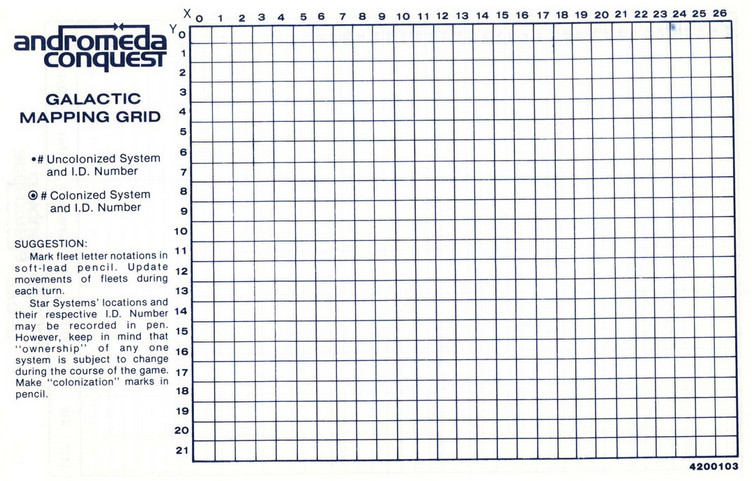
C. Systems
As a single-player game, there is not much to say after the AAR : you really only need to build colonization ships and warships (scout ships cannot attack planets).
In multiplayer I believe the game has a lot more options : you can only see enemy fleets by using the (short-range) tactical maps, making scout ships really useful, especially since they are fast (5 tiles a turn, vs 3 for warships). You can also use them to harass the enemy or shadow the enemy fleet. Destroying planets is new in the genre, and even today not all space 4X give this option. Sadly, there was no AI to test those features.
D. Scenario design & Balancing
The game has 12 systems per player, which means 4 players are fighting over a massive 48 systems galaxy.
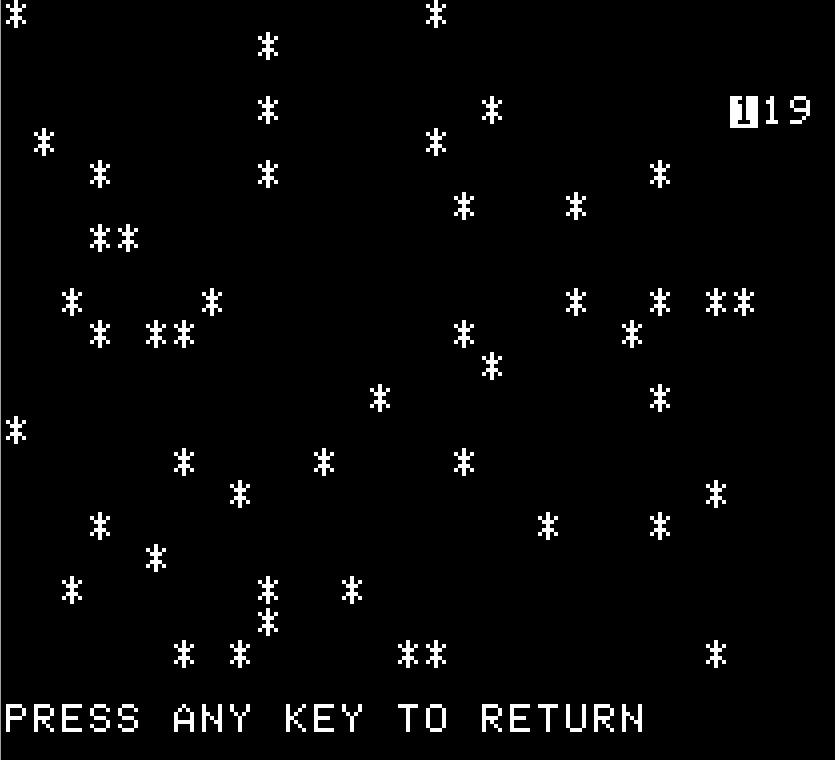
This also means, sadly, that unlike in Galaxy you cannot choose to have a small match with fewer worlds than usual, or the opposite.
I suspect luck plays an immense role in the game. In single-player, sometimes I started next to productive and cheap vacant worlds, and sometimes I started in a corner, and the closest world was well-defended by neutrals. Whatever the number of players, the objective is still to conquer 10 planets, so if you are lucky you may also win while not meeting anyone.
E. Did I make interesting decisions ?
None.
F. Final rating
N/A. No made for single player.
Contemporary reviews
I could not find many reviews for Andromeda Conquest – even the Space Gamer seems to have missed it. The few reviews are not exactly glowing : Creative Computing calls it “frankly dull” in single player (September 1983) though at least it admits that with 3 or 4 players it is a “good evening entertainment” : “the level of challenge is low, but the playability is high”. Electronic Games (March 1984) compares it to Galaxy, and concludes that the latter “is probably the better of the two disks”. The game is totally ignored by the Book of Atari Software and the Book of Apple Software.
The only really positive article is not a review, it is an article about “Strategies and Rules Modifications” in Computer Gaming World (November 1982) written by Floyd Matthews. Matthews uses the opportunity to review the game, and concludes by stating that “Andromeda Conquest can give you hours of gaming enjoyment with your friends.” The fact that Matthews is credited as a playtester of Andromeda Conquest hopefully played no role in this assessment – that’s probably why he did not feel he had to mention it.
All in all, a game forgotten almost as soon as it was released, but which possibly served as a precursor to Reach for the Stars, which I will cover when we get to 1983.
Note : I revisited the game some months later in multiplayer – check it here.